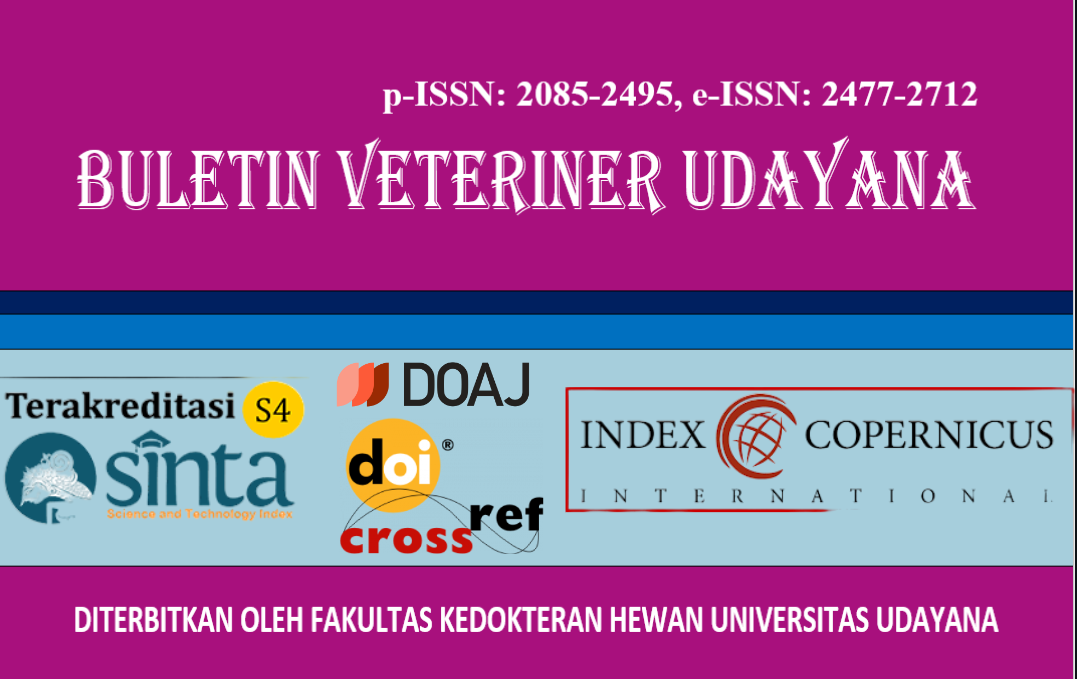COLISEPTICEMIA IN PIGLET AT A PIG FARM IN PEREAN VILLAGE, BATURITI DISTRICT, TABANAN, BALI
DOI:
https://doi.org/10.24843/bulvet.2024.v16.i06.p13Keywords:
Colibacillosis, E. coli, pigletAbstract
The animal used as case in this report is a pig came from a farm in Perean Village, Baturiti District, Tabanan, Bali. It is a male piglet aged ± 2 months which was reported to have had continuous diarrhea for 6 days. The piglet was also showing symptoms such as emaciation, weakness and anorexia. This case study aims to discuss the anatomical pathology findings, histopathology and laboratory examination results of the piglet which is suspected of being infected with colibacillosis. The examination method consists of collecting data related to epidemiology, necropsy and data on anatomical pathological changes, histopathological preparations and histopathological change lesion findings, culture and identification of bacteria, and identification of parasites. All data results obtained will then be analyzed qualitative descriptively (Dharmayanti, 2022). Necropsy result shows haemorrrhage in almost all organs, along with distension and swelling in the intestines and stomach. Histopathological examination shows bleeding and inflammation in brain, trachea, spleen, and large intestine, as well as inflammation and necrosis in the lungs, heart, kidneys, liver, stomach and small intestine. In the bacteriological examination, the bacterial agent E. coli was successfully isolated from heart and lungs. While the parasitological examination did not reveal any parasitic agents involved. Based on series of examinations that had been carried out, it is concluded that the piglet is infected with colibacillosis. It is recommended to improve sanitation of the cage and surrounding areas in order to further reduce the risk of colibacillosis transmission amongst pigs.




